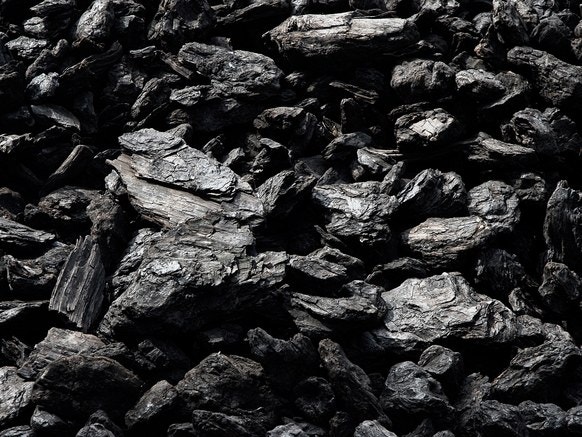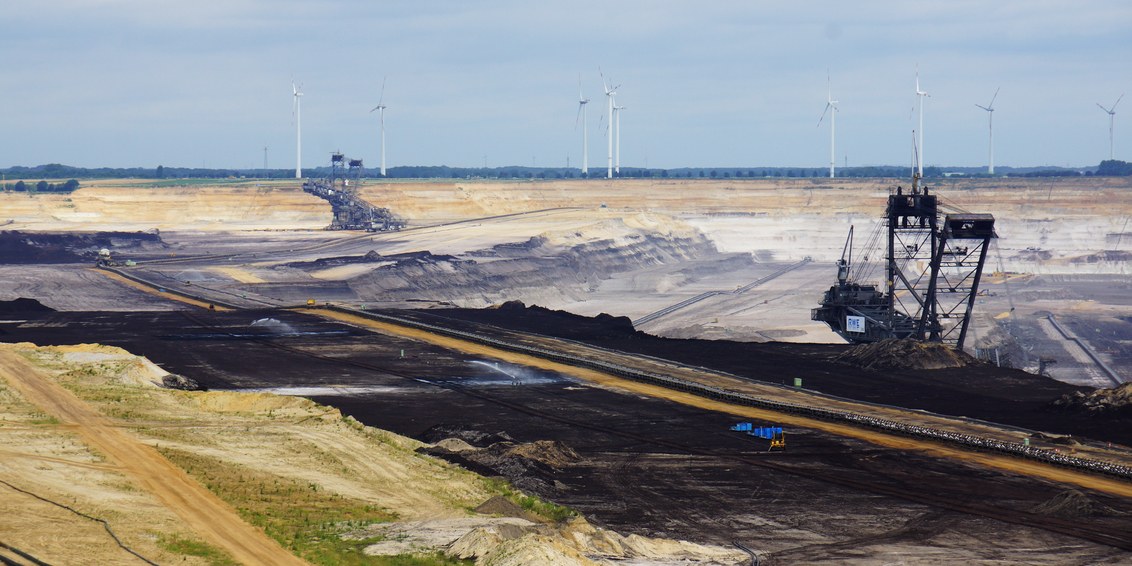本文转自《Wired》发布的题为“IF GERMANY CAN'T QUIT COAL, CAN ANYONE ELSE?”的报道。
日期:2018.07.30
原文链接:https://www.wired.com/story/if-germany-cant-quit-coal-can-anyone-else/

Germany's switch from black to brown (lignite) coal is making it tougher to meet carbon reduction goals.
德国从黑色到棕色(褐煤)煤的转变使得实现减碳目标变得更加困难。
SOMETIME NEXT MONTH, underground miners will dig Germany’s last ton of black coal, load it onto a conveyor belt, and whisk it a mile to the surface of the Ibbenbüren mining facility. From there, the high-energy anthracite will be tossed into a high-combustion chamber in an adjacent power plant, where it will be converted into electricity to light up this northwest corner of Germany’s North Rhine-Westphalia state.
下个月的某个时候,地下采矿者将挖出德国最后一吨黑煤,将其装载到传送带上,然后将其甩至一英里外的Ibbenbüren矿区。 在那里,高能量无烟煤将被投入邻近发电厂的高燃烧室,然后被转换成电力,照亮德国北莱茵 - 威斯特法伦州的西北角。
It’s been a good run at the Ibbenbüren mine. Some of the original elevators are a century old, and some machinery dates from its heyday in the 1960s, when more than 10,000 workers punched the clock here. But now, after 500 years of mining in this coal-producing region, the last shift is almost over.
这是Ibbenbüren矿的一次很好的运行。 一些原始电梯已有一个世纪的历史,有些机器可以追溯到20世纪60年代的鼎盛时期,当时有超过10,000名工人在这里工作。 但现在,在这个煤炭产区开采500年后,最后一次转变几乎已经结束。

“It’s like organizing your own funeral,” says Hubert Hüls, the 58-year-old manager of surface operations at the mine owned by the German firm RAG. Hüls’ father and grandfather mined coal here; he started as a mechanic in 1986 and will remain to supervise clean-up operations, albeit with a small maintenance crew of 200 workers. German taxpayers have been subsidizing generations of coal miners like the Hüls family with a one-penny “kohlpfennig” fee on electricity use, but the European Union pressured them to stop back in 2007 because it was unfair to other coal-producing nations. As a result, RAG's mining operation here can't afford to stay open.
“这就像组织自己的葬礼一样,”58岁的德国RAG公司拥有的矿山地面运营经理HubertHüls说。 Hüls的父亲和祖父在这里开采煤炭; 他于1986年开始担任机械师,并将继续监督清理工作,尽管他的维修团队只有200名工人。 德国纳税人一直在资助像Hüls家族这样的几代煤矿工人,为他们支付一分钱的“kohlpfennig”电费,但欧盟迫使他们在2007年停止工作,因为这对其他煤炭生产国是不公平的。 因此,RAG在这里的采矿业务无法保持开放。
It would seem like a major step toward Prime Minister Angela Merkel's goal to cut greenhouse gas emissions by 40 percent of 1990 totals by 2020. But German utilities just can't seem to quit burning coal. Some power plants are switching to cheaper imported black coal from the United States, Russia, or Colombia. And at the same time, Germany is also digging more lignite, or brown coal. Lignite is 50 percent water and yields much less energy than the shiny black anthracite. But lignite is easy to bulldoze from massive strip mines that dot Germany’s northwest and eastern border with Poland. Among Europe’s power plants, Germany’s brown coal stations constitute six out of 10 of the worst polluters.
这似乎是朝着总理安格拉·默克尔提出的目标迈出的重要一步,该目标是到2020年将温室气体排放量减少到1990年总量的40%。但德国公用事业似乎似乎无法停止燃烧煤炭。 一些发电厂正在转向使用来自美国,俄罗斯或哥伦比亚的廉价进口黑煤。 与此同时,德国也在挖掘更多的褐煤或褐煤。 褐煤含有50%的水,产生的能量比闪亮的黑色无烟煤少得多。但是褐煤很容易从分布在德国西北部和东部与波兰边境的大型带矿中开采出来。在欧洲的发电厂中,德国的褐煤站占最严重污染者中的六分之一。
Merkel is trying to manage this “energiewende” or energy-transition, without using nuclear power, which she decided to abandon after the 2011 Fukushima disaster. But the numbers aren’t adding up, and critics say Germany could lose all the progress it has already made. So if super-green Germany—with its massive wind and solar farms, advanced technology and industrious mindset—can’t quit its love affair with coal, can anyone else on the planet? Right now, the answer is a bit muddled.
默克尔试图在不使用核电的情况下管理这种“能源转换”或能源转型,她决定在2011年福岛灾难后放弃核电。 但这些数字并没有增加,批评人士说德国可能会失去它已经取得的所有进展。 因此,如果超级绿色的德国 - 拥有大规模的风能和太阳能农场,先进的技术和勤劳的心态 - 不能放弃与煤炭的热爱,那么这个星球上的其他任何人都可以吗? 现在,答案有点混乱。
That’s why a “coal commission” of politicians, experts, energy industry representatives and green groups is meeting this summer in Berlin to chart Germany’s rocky path to a carbon-free economy. Former US vice president Al Gore told the commission on June 26 that Germany risks being left behind in the drive to reduce greenhouse gas emissions by eliminating both coal and the internal combustion engine. “The leadership provided in years past created a reality that now no longer exists,” Gore told Reuters. “Other countries are moving much faster than Germany,” he said. The commission won’t have an energy blueprint for the German legislature for several months.
这就是为什么政治家,专家,能源行业代表和绿色团体的“煤炭委员会”今年夏天将在柏林举行会议,以纪念德国走向无碳经济的艰难道路。 美国前副总统戈尔6月26日告诉委员会,德国有可能因为消除煤炭和内燃机而减少温室气体排放。 戈尔告诉路透社说:“过去几年提供的领导创造了一个现在已不复存在的现实。”“其他国家的发展速度远远超过德国,”他说。 几个月来,该委员会将没有德国立法机构的能源蓝图。
Germany’s appetite for cheap brown lignite coal is nowhere more apparent that the village of Keyenberg, about an hour north of Cologne. It’s one of seven villages being gobbled up by the massive Rheinisch mine that is Europe’s largest. More than 20,000 people have been relocated to new settlements as the huge pit approaches, but some residents remain—like 73-year old Kathi Winzen, who is holding out along with 27 family members in a brick farmhouse and compound that dates back to the 18th century.
德国对廉价褐煤的需求远远超过科隆北部约一小时的凯恩贝格村。 这是欧洲最大的Rheinisch矿山吞并的七个村庄之一。 随着这个巨大的矿坑的临近,已有超过2万人搬迁到新的定居点,但是一些居民仍然居住在这里,比如73岁的Kathi Winzen,他和27个家庭成员一起在一个砖砌农舍里工作,其历史可以追溯到18世纪。
“There’s a lot of uncertainty,” said Winzen through a translator. “We will have to decide to relocate, but I’ve always lived in the village. It’s sad that all this will disappear, but what can you do?”
“有很多不确定因素,”Winzen说道。 “我们将不得不决定搬迁,但我一直住在村里。 令人遗憾的是,这一切都将消失,但我又能做些什么呢?“
Her 53 year-old son Norbert has been organizing resistance to the village’s relocation. But local courts have sided with the mining company, which owns mineral rights to the coal beneath. It’s an odd juxtaposition of a dirty brown mining pit lined with big wind turbines among the fields and farms nearby. “The entire village is deserted," says Norbhert. “But the coal is not eternal and it will run out.”
她53岁的儿子Norbert 一直在组织抵抗该村的搬迁。 但是,地方法院支持矿业公司,该公司拥有煤矿的矿产权。 这是一个奇怪的肮脏的棕色采矿坑,在附近的田地和农场之间排列着大型风力涡轮机。 “整个村庄都是荒芜的,”Norbert说,“但煤炭不是永恒的,而且会耗尽。”
Keyenberg has been in the crosshairs of the mining operation for the past 30 years, enduring a of slow-motion squeeze. It’s the same with Germany, squeezed by its desire to operate its muscular economy on green energy, but unable to quit its cheap supply of fossil fuels.
在过去的30年里,Keyenberg一直处于采矿作业的风口浪尖上,忍受着缓慢的挤压。它与德国一样,受到其在绿色能源上运营其强大经济的愿望的挤压,但无法放弃其廉价的化石燃料供应。